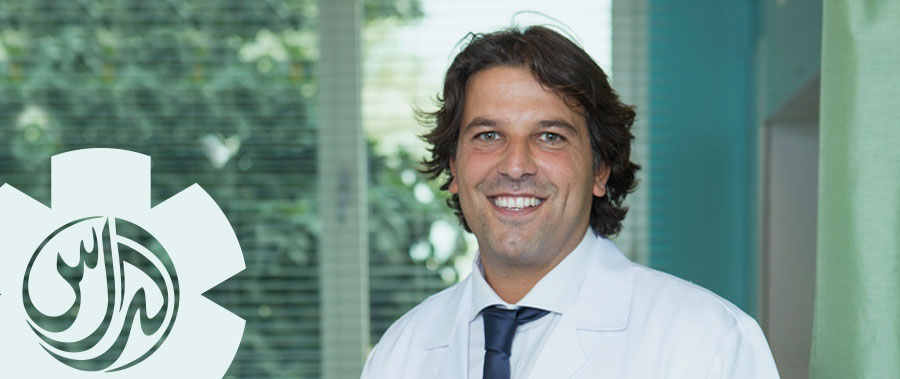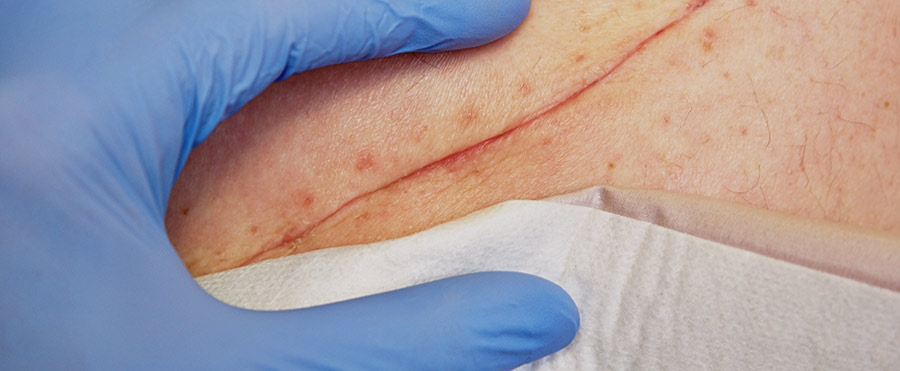Management of surgical wound infection
By Dr. Sergio Mazzei, General Surgeon
SSI is an infection related to a surgical procedure which occurs near the surgical site within 30 days following surgery

Surgery which involves an incision of the skin can lead to a wound infection after surgery. Surgical site infection (SSI) is one of the most common health cares associated infection following surgery. It is linked with significant morbidity, transfer to an intensive care unit, prolonged hospitalizations and hospital readmission.
In addition, the development of SSI has a significant impact on the outcomes and is a source of patient anxiety in the postoperative period, particularly after hospital discharge.
SSI is an infection related to a surgical procedure
It occurs near the surgical site within 30 days following surgery (or up to 90 days following surgery where an implant is involved). Incisional SSIs are further divided into those involving only skin and subcutaneous tissues (superficial incisional SSI) and those involving deeper softer tissues of the incision (deep incisional SSI). Organ infections include abscess, anastomotic leak for intra-abdominal operations, and implant-associated infections.
During the post-operative wound review the following signs should be looked out for: fever, hematoma, seroma, separation of wound edges and purulent discharge from the wound. Bear in mind that inflammation of a surgical wound is part of the physiological process of healing and, in the absence of other clinical features, does not represent a wound complication.
If wound infection is suspected, active management should be considered.
In the first instance, wound swabs for culture and sensitivity should be taken. Next, empirical antibiotic therapy can be applied on the basis of the suspected pathogen. Removal of non-viable and infected tissue is another effective method of treating and preventing further extension. Wounds with equivocal signs do not require immediate antibiotic therapy but should be closely and regularly monitored for any progression of signs.
Superficial dehiscence can be closed by secondary intention, after removal of necrotic tissue, and this can be reinforced by dressings. Debridement and primary closure are indicated only in small dehiscence, whereas continuous tension devices and negative pressure dressings are appropriate for large and deep wound dehiscence. However, if doubt arises at any stage, you should seek appropriate advice from a specialist.

Certain patient factors may increase the risk of post-operative wound complications.
These include the type of surgery and the body part involved, certain medications, immunosuppressive disorders, peripheral vascular disease, poorly controlled diabetes, tobacco smoking and malnutrition. Immunosuppressive agents and immunosuppressive disorders suppress the inflammatory process and delay wound healing. The initial inflammatory response is impaired in poorly controlled diabetes whilst hyperglycemia diminishes neutrophil and phagocyte function, which in turn slows down the wound healing process. In patients with peripheral vascular disease, oxygen delivery to the tissues is compromised. Similarly, tobacco smoking decreases oxygen delivery as a result of arterial spasm. Poor nutrition leads to slow metabolic processes, which reduce collagen synthesis. It is therefore important to ensure these factors are managed to prevent wound complications from developing.
Optimal management of surgical wounds is an important part of post-operative recovery
Health care professionals should monitor the process of acute wound healing, prevent wound complications and treat appropriately if complications arise. The key elements of post-operative wound management include timely review of the wound, appropriate cleansing and dressing, and early recognition and intervention of wound complications.
Book a visit 04 452 9998 or by filling the online form